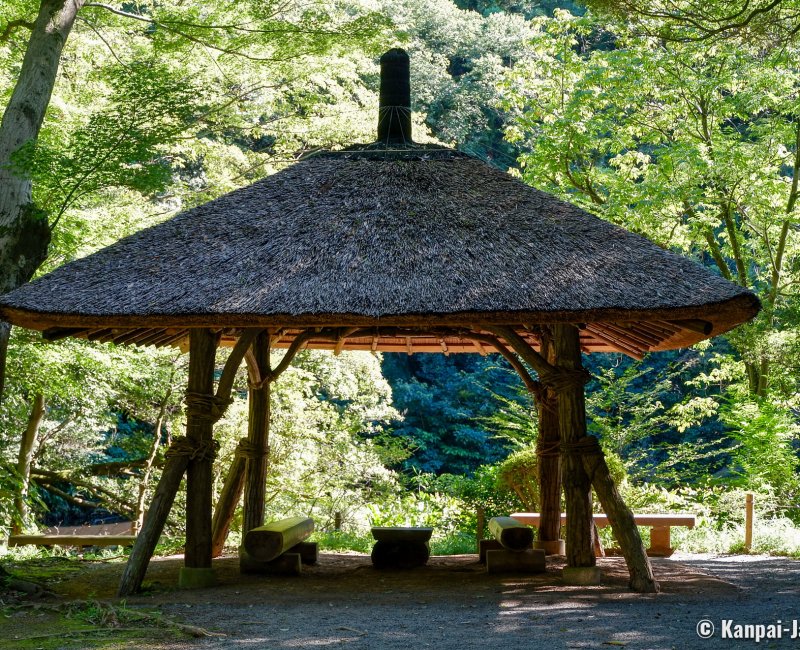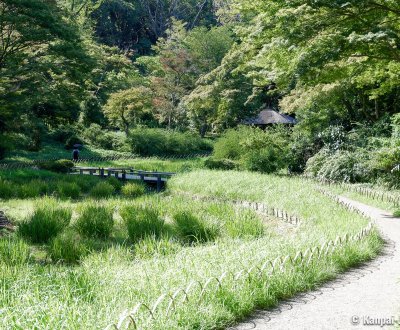Meiji Jingu Gyoen
Harajuku Shrine’s Inner Garden
Meiji Jingu Gyoen is the inner garden of the great Meiji-jingu shrine located in Harajuku, in Shibuya ward in Japan. Less popular than the main Shinto grounds, this bucolic garden is concealed in Yoyogi Park’s forest and offers its visitors a green oasis, protected from the noises of the city.
In addition to the Shinto pavilions, the large Meiji-jingu estate is home to several smaller and pleasant places to visit, that most of tourists are not aware of. Located to the south of the shrine’s grounds and next to the northwestern limit of Yoyogi Park, the inner garden called Meiji Jingu Gyoen is worth the detour. Its entrance is easy to spot, along the great torii ⛩️ gates alley leading to the main grounds from Harajuku station.
The green area has origins dating back to the Edo period (1603 – 1868), when its lands belonged to the daimyo feudal lords. It was first the private Japanese garden of the Kato clan (Kumamoto domain), then of the Ii clan (Hikone domain) before it became an imperial garden at the occasion of the Meiji Restoration (1868 - 1889).
Emperor Meiji (1852 – 1912) and his spouse Empress Shoken (1849 - 1914) loved its natural and forested aspects in the heart of the capital. Redesigned in the early 20th century as a place for strolling, it shows the simple taste of the imperial couple regarding gardens. The existence of this garden was a key factor in choosing the location of Meiji-jingu shrine in 1920, at the edge of Yoyogi Park’s forest.

A bucolic walk sheltered from the city
With its 83.000 m² superficies, Meiji Jingu Gyoen gives a large place to vegetation and the surrounding forest silences the hustle and bustle of the city. Visitors forget being in the heart of Tokyo for a moment and wander in this rural landscape as if strolling in the Japanese countryside.
A true green oasis, the Meiji shrine’s inner garden welcomes its visitors in a peaceful atmosphere but does not have much to show; only 2 small traditional architecture installations are viewable on the path:
- Kakuun-tei tea house, dating back to 1900 and rebuilt as an exact replica in 1958; and,
- The thatched-roof Gazebo, a rest area to shelter from sunlight and rain.
The main pond, Minami-ike, is the gathering spot of all sorts of critters, such as insects and turtles. There are also migratory birds like the grey heron enjoying a refreshing pause by the water.

As for flowers, Meiji Jingu Gyoen is renowned for its 1,500 iris blooming in early June. Other seasonal colors are to be admired throughout the year, like:
The garden is also home to a natural spring 🌸, that was discovered by Kato Kiyomasa (1562 – 1611), the 1rst lord of Kumamoto Castle 🏯 in the early Edo period. The water’s temperature in the well is 15°C (59°F) throughout the year.

